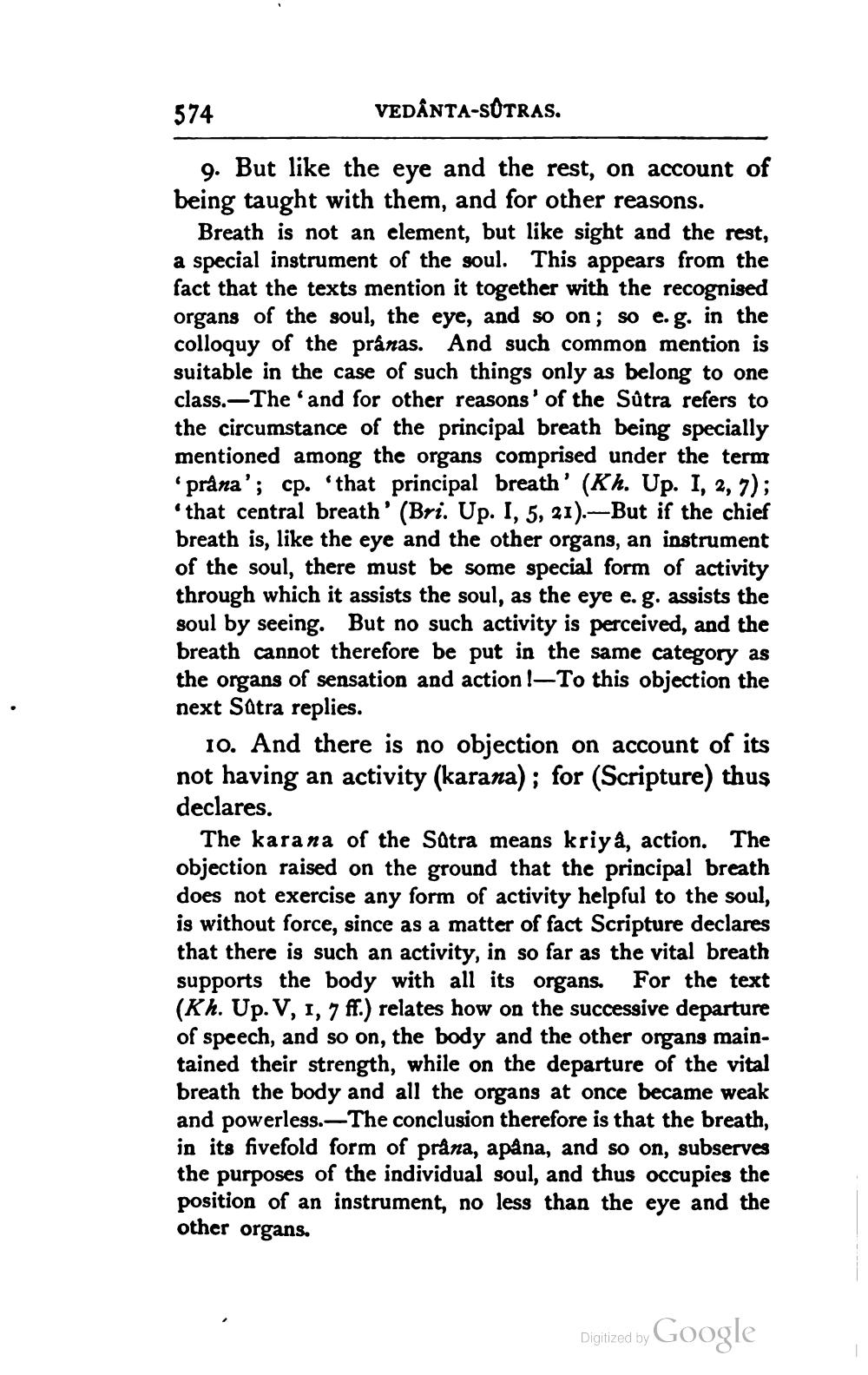________________
574
VEDÂNTA-SOTRAS.
9. But like the eye and the rest, on account of being taught with them, and for other reasons.
Breath is not an element, but like sight and the rest, a special instrument of the soul. This appears from the fact that the texts mention it together with the recognised organs of the soul, the eye, and so on; so e. g. in the colloquy of the pranas. And such common mention is suitable in the case of such things only as belong to one class. The and for other reasons' of the Sûtra refers to the circumstance of the principal breath being specially mentioned among the organs comprised under the term prana'; cp. that principal breath' (Kh. Up. I, 2, 7); that central breath' (Bri. Up. I, 5, 21).-But if the chief breath is, like the eye and the other organs, an instrument of the soul, there must be some special form of activity through which it assists the soul, as the eye e. g. assists the soul by seeing. But no such activity is perceived, and the breath cannot therefore be put in the same category as the organs of sensation and action !—To this objection the next Satra replies.
10. And there is no objection on account of its not having an activity (karana); for (Scripture) thus declares.
The karana of the Satra means kriya, action. The objection raised on the ground that the principal breath does not exercise any form of activity helpful to the soul, is without force, since as a matter of fact Scripture declares that there is such an activity, in so far as the vital breath supports the body with all its organs. For the text (Kh. Up. V, 1, 7 ff.) relates how on the successive departure of speech, and so on, the body and the other organs maintained their strength, while on the departure of the vital breath the body and all the organs at once became weak and powerless.—The conclusion therefore is that the breath, in its fivefold form of prâna, apana, and so on, subserves the purposes of the individual soul, and thus occupies the position of an instrument, no less than the eye and the other organs.
Digitized by
Digitized by Google




